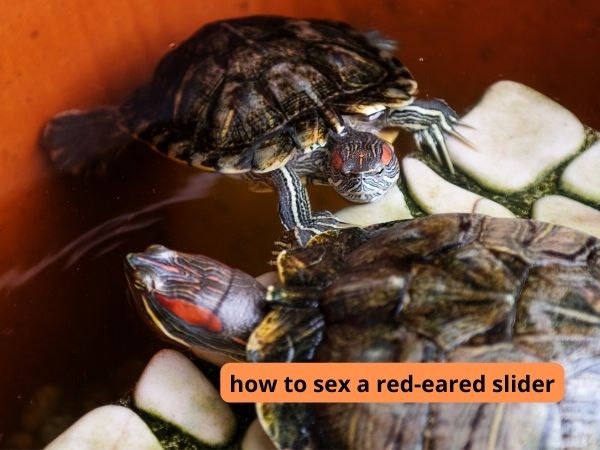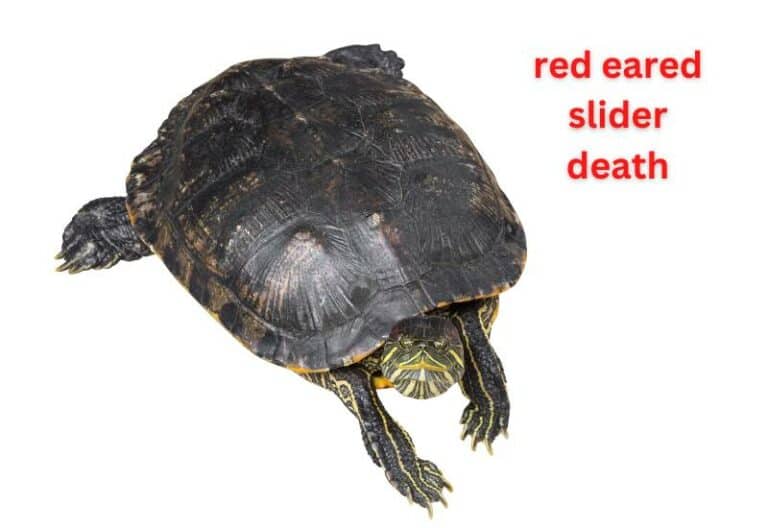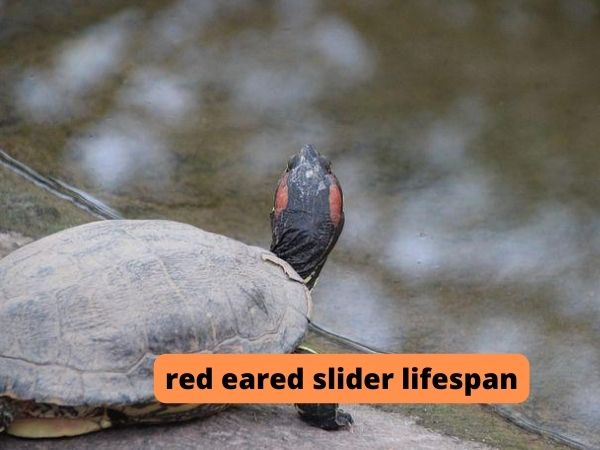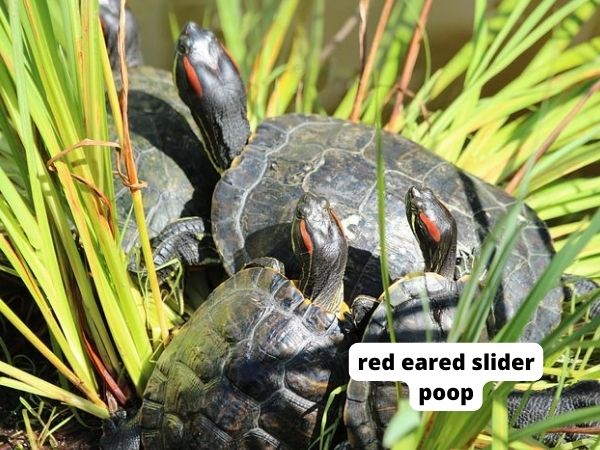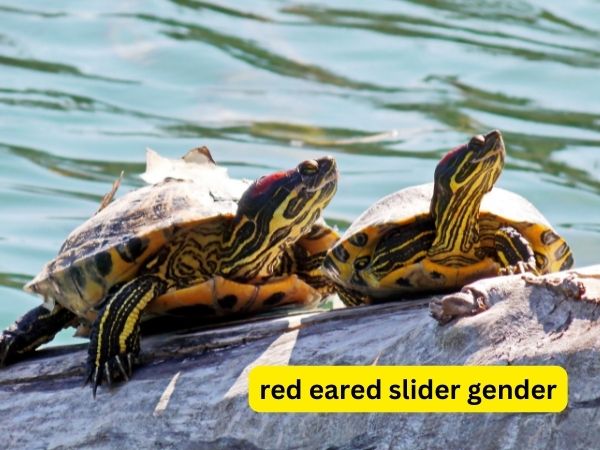Red-eared Slider Turtle Digging Behavior
Today we discuss Red-eared Slider Turtle Digging Behavior. Red-eared slider turtles are known for their curious nature and unique habits, and one of the most interesting behaviors they exhibit is digging. These adorable reptiles have a natural instinct to dig, and it serves several important purposes in their lives.
Digging is not just a hobby for red-eared slider turtles; it plays a crucial role in their survival. From finding shelter to creating nests for laying eggs, digging helps these turtles meet their basic needs. But what drives this behavior and how does it benefit these charming creatures? Let’s find out!
So, if you’re ready to explore the secrets of red-eared slider turtle digging behavior, join me as we uncover the fascinating world beneath their shells. It’s time to dig deeper into the amazing world of these unique reptiles!
Red-eared Slider Turtle Digging Behavior:
Welcome to the fascinating world of the red-eared slider turtle! These marvelous creatures are known for their unique digging behavior, which is an essential aspect of their natural instincts and survival. In this article, we will delve into the intricacies of the red-eared slider turtle’s digging behavior, exploring the reasons behind it, the techniques they use, and the benefits it brings to their overall well-being.
The Evolutionary Background of Digging Behavior in Red-eared Slider Turtles
Understanding the evolutionary background of red-eared slider turtles helps shed light on their digging behavior. The ancestors of red-eared slider turtles were terrestrial animals that lived in habitats with soft substrate, such as loose soil or mud. They relied on digging to create nests and find shelter, ensuring their survival and that of their offspring.
Over time, as red-eared slider turtles transitioned to an aquatic lifestyle, they retained their affinity for digging. This behavior serves various purposes, including thermoregulation, reproduction, and finding food. Let’s explore each of these aspects in more detail.
Thermoregulation: Digging allows red-eared slider turtles to regulate their body temperature. By burrowing into the cool damp soil, they can escape the scorching heat during hot summer days, effectively preventing overheating and dehydration.
The Techniques and Strategies Employed by Red-eared Slider Turtles when Digging
Red-eared slider turtles showcase remarkable adaptation and efficiency in their digging techniques. Their strong limbs and sharp claws enable them to dig through various types of substrates, including sand, mud, and gravel. Here are some common techniques and strategies employed by these turtles:
Scratching: Red-eared sliders use their front claws to scratch and loosen the soil or substrate. They create depression by repeatedly pushing and pulling their claws, making way for their bodies to fit inside.
Scooping: After creating a depression, red-eared slider turtles use their strong back legs to scoop the soil beneath them and throw it away. This motion helps them create a deeper burrow and provides the necessary space to maneuver inside.
Shallow Digging vs. Deep Burrowing: Depending on their immediate needs, red-eared slider turtles may engage in shallow digging or deep burrowing. Shallow digging is often employed for thermoregulation and finding suitable nesting sites, while deep burrowing is more common when hibernation or escaping predators is required.
Benefits of Digging Behavior for Red-eared Slider Turtles:
Digging behavior plays a vital role in the overall well-being of red-eared slider turtles. Here are some of the benefits it offers:
Protection from Extreme Temperatures: By burrowing into the soil, red-eared slider turtles can escape extreme temperatures, be it scorching heat or freezing cold. This behavior allows them to maintain optimal body temperature, ensuring their survival.
Nesting and Reproduction: Digging plays a crucial role in the nesting and reproductive process of red-eared slider turtles. Female turtles dig nests in sandy areas or loose soil to lay their eggs. This behavior helps protect the eggs from predators and provides an optimal environment for their development.
Escape from Predators: Digging provides red-eared slider turtles with an escape route from potential predators. The ability to quickly burrow into the ground allows them to avoid being captured, providing an effective defense mechanism.
Red-eared Slider Turtle Digging Behavior: A Delicate Balance
While digging behavior is essential for red-eared slider turtles, it is crucial to strike a delicate balance when observing and interacting with them in captivity. Adequate substrate depth, appropriate temperature, and proper habitat design are essential factors to consider to ensure the well-being of these turtles. By understanding their natural instincts and providing suitable conditions, red-eared slider turtles can thrive and showcase their remarkable digging skills.
Feeding Habits of Red-eared Slider Turtles:
When it comes to feeding red-eared slider turtles, it is essential to understand their dietary preferences and nutritional needs. These turtles follow an omnivorous diet and have specific requirements that contribute to their overall health and well-being. In this section, we will explore the feeding habits of red-eared slider turtles, including their preferred foods, feeding techniques, and important considerations for maintaining a balanced diet.
Preferred Foods of Red-eared Slider Turtles:
Red-eared slider turtles have a diverse diet that consists of both plant matter and animal protein. In their natural habitat, they feed on a variety of aquatic plants, algae, insects, small fish, and invertebrates. Here are some examples of their preferred foods:
Aquatic Plants: Red-eared slider turtles consume a range of aquatic plants, such as water lettuce, water hyacinth, duckweed, and water lilies. These plants provide essential vitamins, minerals, and fiber, contributing to the overall health of the turtles.
Protein Sources: Red-eared slider turtles require animal protein for optimal growth and development. They feed on small fish, insects, worms, and crustaceans, which are rich sources of essential nutrients like calcium and protein.
Supplements: In captivity, it is essential to supplement the diet of red-eared slider turtles with calcium and vitamin D3. These supplements help prevent nutritional deficiencies, particularly in turtles that do not have access to natural sunlight, which aids in vitamin D synthesis.
Key Takeaways: Red-eared Slider Turtle Digging Behavior
- The red-eared slider turtle is known for their digging behavior.
- They dig to create nests for laying eggs.
- Digging is also a way for them to burrow and find shelter.
- Red-eared slider turtles have strong claws that help them with digging.
- Digging behavior can vary depending on the season and environmental conditions.
Faqs for Red-eared Slider Turtle Digging Behavior:
Red-eared slider turtles dig for various reasons, but primarily to create nests for laying eggs. Female turtles will dig holes in soft soil, sand, or gravel to deposit their eggs. This instinctual behavior ensures the eggs are protected and have a suitable environment for incubation.
To encourage digging behavior in your red-eared slider turtle, it’s crucial to provide them with the right habitat setup. Start by offering a spacious enclosure with a substrate that allows digging, such as sand or a combination of soil and gravel. The substrate should be at least 6-8 inches deep to provide enough space for the turtle to dig comfortably.
Furthermore, providing a nesting box or a designated area with softer substrate can also promote digging and provide a suitable spot for egg-laying. This area should be easily accessible and kept separate from the rest of the enclosure. Make sure to monitor the humidity levels in the nesting area to ensure it matches the specific requirements of red-eared slider turtles.a
Excessive digging behavior in red-eared slider turtles can sometimes be a cause for concern. If a turtle is constantly digging or seems to be displaying distress signals during the digging process, it’s important to investigate further. It could indicate an underlying issue, such as a health problem or inadequate environmental conditions. Other signs of concern include refusal to eat, lethargy, or abnormal feces.
Red-eared slider turtles are primarily terrestrial, spending a significant amount of time basking and moving on land. While they are not adept diggers in water like some aquatic turtles, they can exhibit some digging-like behaviors in aquatic environments.
For example, they may use their front limbs to push aside rocks or dig into mud to search for food. However, their digging abilities underwater are limited compared to their terrestrial counterparts.
Red-eared slider turtles can engage in digging behavior that may result in some modification of their enclosure. This can include displacement of substrate, rearranging rocks, or creating shallow depressions. While not necessarily considered damage, it’s essential to provide an enclosure that can withstand these natural behaviors and be easily cleaned and maintained.
Choosing durable materials for the enclosure, such as sturdy substrates and securely anchored items, can help minimize any potential damage. Regularly monitoring and maintaining the enclosure will also help ensure the turtle’s safety and well-being, as well as the longevity of their habitat.
If you notice any worrisome behaviors, consult a veterinarian who specializes in reptiles. They can help determine if there are any underlying health issues or if adjustments need to be made to the turtle’s enclosure or care routine. Regular monitoring and understanding your turtle’s baseline behavior will help you identify any changes and address them promptly.
Red-eared slider turtles are primarily terrestrial, spending a significant amount of time basking and moving on land. While they are not adept diggers in water like some aquatic turtles, they can exhibit some digging-like behaviors in aquatic environments. For example, they may use their front limbs to push aside rocks or dig into mud to search for food. However, their digging abilities underwater are limited compared to their terrestrial counterparts.
It’s important to provide a suitable balance of both land and water areas in the turtle’s enclosure to meet their natural needs. This will allow them to engage in various behaviors, including digging, both on land and in water.
Red Eared Slider Turtle – AMAZING FACTS – You Probably didn’t know
Summary:
Turtles love to dig! Red-eared slider turtles are experts at digging in the sand and gravel. They use their strong front feet and sharp claws to create holes for hiding, laying eggs, and escaping predators. Digging is a natural behavior for these turtles and helps keep them safe and comfortable.
When digging, red-eared slider turtles show specific patterns. They dig 45-degree angled holes when they want to rest or avoid the heat. For nesting, female turtles dig deeper, flask-shaped holes to lay their eggs. It’s fascinating to watch these turtles in action as they dig their way into the ground, creating cozy homes and safe spaces for themselves. So, next time you see a turtle digging, remember they are simply doing what comes naturally to them!
